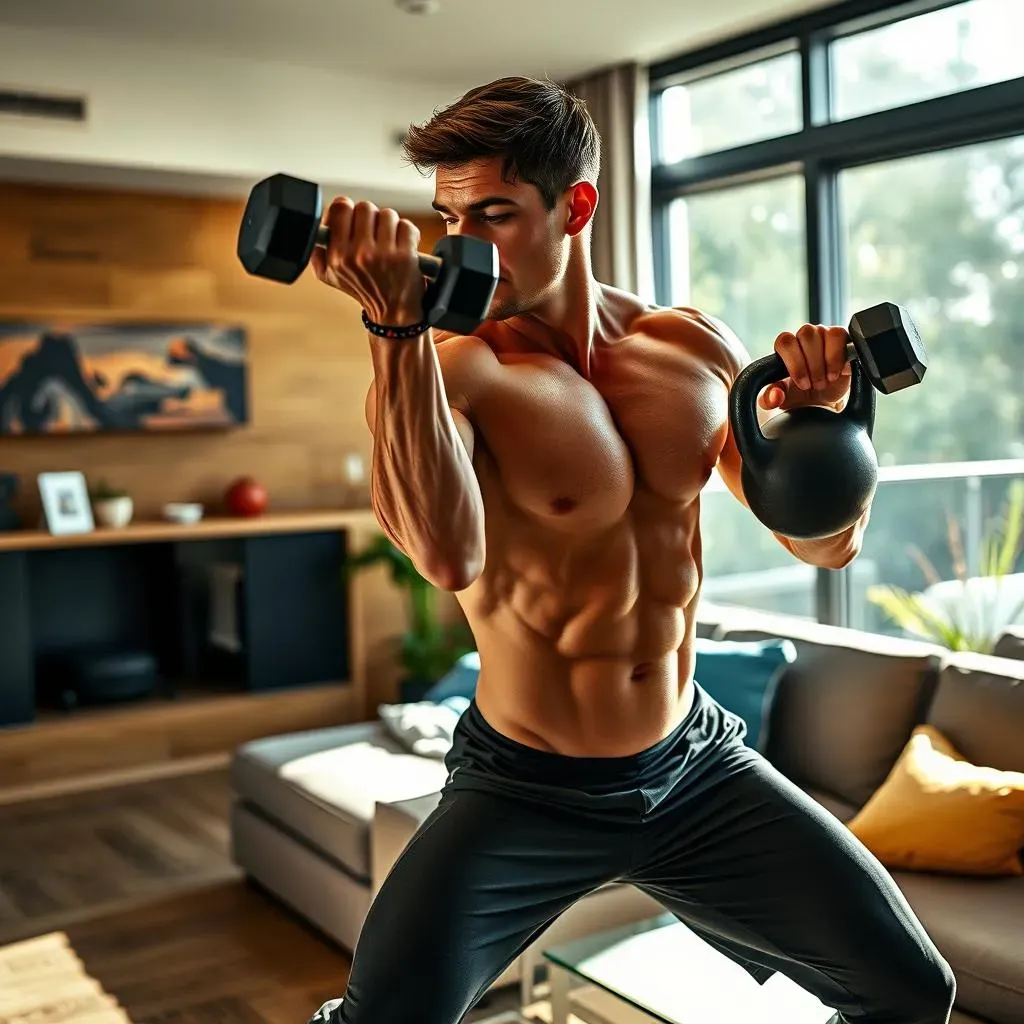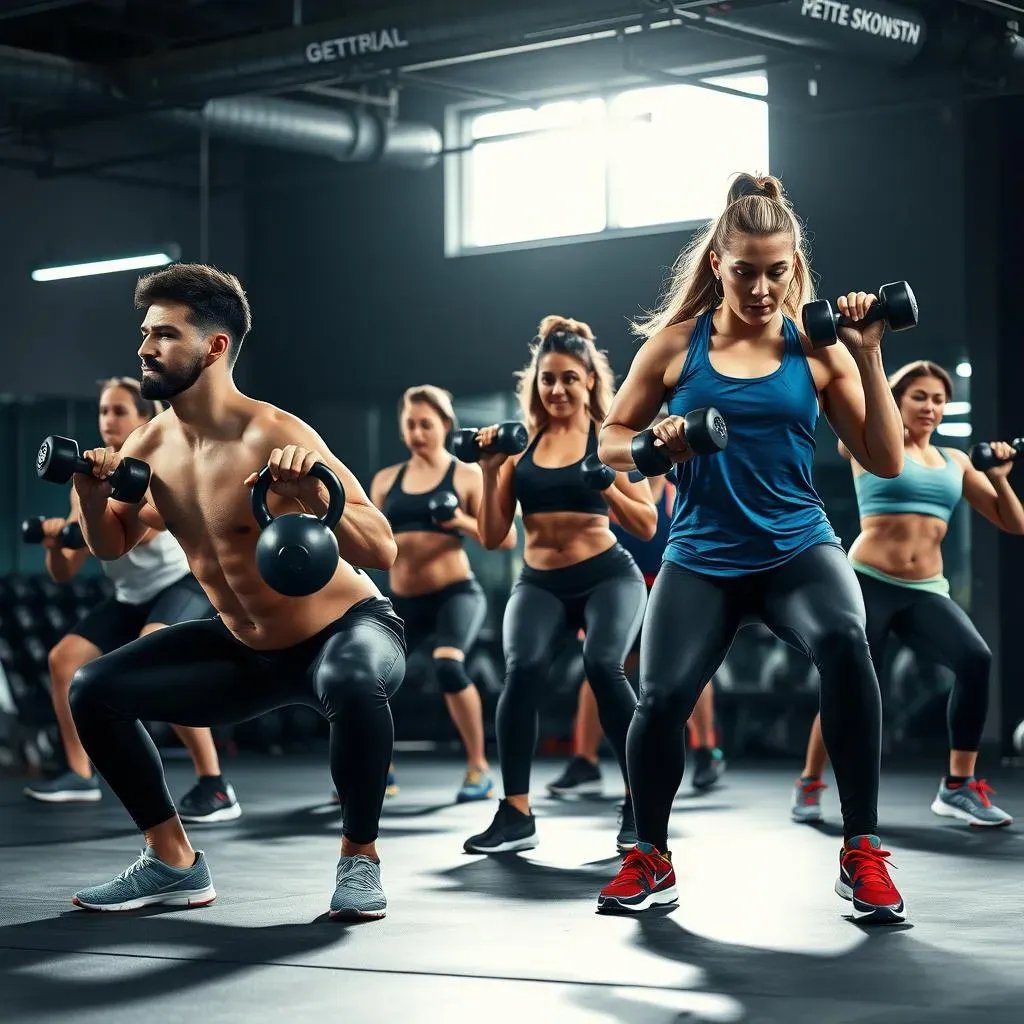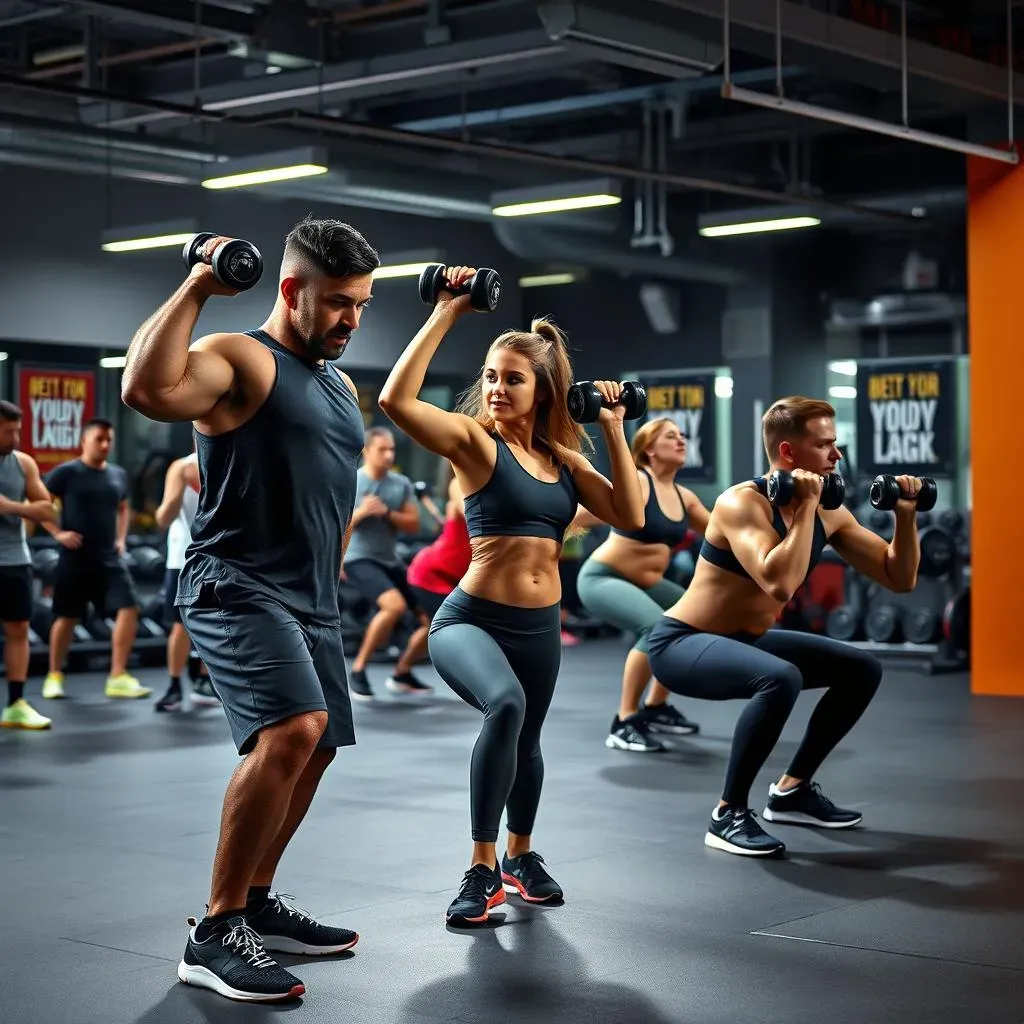Table of Contents
Ready to transform your body with just two pieces of equipment? A full body workout with dumbbells and kettlebells is your ticket to building strength, burning fat, and improving overall fitness, all from the comfort of your own home or a well-equipped gym. Forget spending hours isolating individual muscle groups; we're diving into efficient, compound movements that work multiple muscles at once, maximizing your time and effort. This article isn't just another list of exercises. It's a guide to understanding why this approach is so effective, which exercises give you the most bang for your buck, how to structure your workouts for optimal results, and how to keep progressing so you never plateau.
Why Choose a Full Body Workout with Dumbbells and Kettlebells?

Why Choose a Full Body Workout with Dumbbells and Kettlebells?
Efficiency and Effectiveness Combined
Let's face it, time is precious. Spending hours at the gym hitting individual muscles? Ain't nobody got time for that! That's where full body workouts with dumbbells and kettlebells shine. These workouts are designed to hit multiple muscle groups in a single session, maximizing your calorie burn and muscle activation in a shorter amount of time. Think squats with a kettlebell – you're working your legs, glutes, and core all at once. Or dumbbell chest presses that also engage your triceps and shoulders. It's all about getting more done in less time, without sacrificing results.
Plus, these tools are incredibly versatile. You can do them practically anywhere – your living room, a hotel room, or even a park. No need for fancy machines or a huge space. Just grab your dumbbells and kettlebell, and you're good to go. This makes it perfect for busy folks who want to stay fit without being tied to a gym.
Strength, Cardio, and More
It's not just about building muscle. Full body workouts with dumbbells and kettlebells offer a fantastic blend of strength training and cardiovascular exercise. The dynamic movements, like swings and snatches, get your heart rate up while building power and endurance. This means you're not just getting stronger; you're also improving your cardiovascular health and burning serious calories. It's a win-win!
And don't underestimate the functional benefits. These exercises mimic real-life movements, improving your balance, coordination, and overall functional strength. This translates to better performance in everyday activities, from carrying groceries to playing sports. So, you're not just looking good; you're feeling good and moving better too.
Essential Dumbbell and Kettlebell Exercises for a Full Body Workout

Essential Dumbbell and Kettlebell Exercises for a Full Body Workout
Compound Movements: The Core of Your Routine
When it comes to full body workouts with dumbbells and kettlebells, compound exercises are your best friends. These movements work multiple muscle groups simultaneously, maximizing efficiency and calorie burn. Think of them as the "big rocks" you need to move first in your workout. We're talking squats, deadlifts, presses, and rows. These are the foundation upon which you'll build a stronger, more resilient body.
For example, the goblet squat, performed by holding a dumbbell or kettlebell close to your chest, targets your quads, glutes, and core. The dumbbell Romanian deadlift (RDL) hammers your hamstrings and glutes while also engaging your back. And the overhead press, whether with dumbbells or a kettlebell, builds strength in your shoulders, triceps, and core. Master these movements, and you're well on your way to a killer full body workout.
Dumbbell Domination: Exercises for Strength and Definition
Dumbbells are fantastic for building strength and adding definition to your muscles. They allow for a greater range of motion than barbells, and they force each side of your body to work independently, which can help correct imbalances. Some essential dumbbell exercises for a full body workout include:
- Dumbbell Chest Press: A classic for building chest and triceps strength.
- Dumbbell Rows: Targets your back muscles, improving posture and strength.
- Dumbbell Lunges: Works your quads, glutes, and hamstrings while improving balance.
- Dumbbell Shoulder Press: Builds shoulder strength and definition.
- Dumbbell Bicep Curls: A great way to add some arm definition.
Kettlebell Kings: Power, Endurance, and Functional Fitness
Kettlebells bring a unique element to your full body workouts. Their offset center of gravity challenges your stability and engages your core in a way that dumbbells often don't. Kettlebell exercises are fantastic for building power, endurance, and functional fitness. Some must-have kettlebell exercises include:
- Kettlebell Swings: A dynamic movement that builds power in your hips and hamstrings while also getting your heart rate up.
- Kettlebell Goblet Squats: A great variation of the squat that emphasizes core engagement.
- Kettlebell Turkish Get-Ups: A challenging exercise that improves mobility, stability, and overall strength.
- Kettlebell Snatches: An advanced movement that builds explosive power and coordination.
By incorporating these exercises, you'll not only build strength but also improve your cardiovascular health and functional fitness.
Designing Your Full Body Workout Routine with Dumbbells and Kettlebells

Designing Your Full Body Workout Routine with Dumbbells and Kettlebells
Set Your Goals and Assess Your Fitness Level
Before you even pick up a dumbbell or kettlebell, you need to define your goals. Are you looking to build muscle, lose weight, improve your overall fitness, or something else? Knowing your goals will help you tailor your workout routine to achieve the best results. Also, be honest with yourself about your current fitness level. Are you a complete beginner, or do you have some experience with weight training? This will determine the appropriate starting weight, exercise selection, and workout intensity. Don't jump into advanced exercises right away; start with the basics and gradually progress as you get stronger.
If you're new to weight training, consider consulting with a certified personal trainer. They can assess your fitness level, teach you proper form, and help you design a safe and effective workout routine. It's always better to start slowly and learn the correct techniques than to risk injury by doing too much too soon. Remember, consistency is key, and the goal is to build a sustainable fitness habit.
Structuring Your Weekly Workout Plan
Now that you know your goals and fitness level, it's time to structure your weekly workout plan. A well-designed plan will ensure that you're hitting all your muscle groups and allowing your body adequate time to recover. A common approach is to perform full body workouts with dumbbells and kettlebells 2-3 times per week, with rest days in between. This allows your muscles to repair and rebuild, leading to greater strength gains. On your rest days, you can engage in light activities like walking, stretching, or yoga to promote recovery and reduce muscle soreness.
When designing your workout plan, consider the following factors:
- Frequency: How many times per week will you work out?
- Exercise Selection: Which exercises will you include in your routine?
- Sets and Reps: How many sets and reps will you perform for each exercise?
- Rest Time: How much rest will you take between sets?
- Progression: How will you gradually increase the intensity of your workouts over time?
A sample weekly workout plan might look like this:
Day | Workout | Focus |
|---|---|---|
Monday | Full Body Workout A | Strength |
Wednesday | Full Body Workout B | Power |
Friday | Full Body Workout A | Endurance |
Tuesday, Thursday, Saturday, Sunday | Rest or Active Recovery | Recovery |
Choosing the Right Exercises and Rep Ranges
The exercises you choose should target all major muscle groups: legs, back, chest, shoulders, arms, and core. Focus on compound movements like squats, deadlifts, presses, and rows, as these work multiple muscles simultaneously. Also, choose exercises that you enjoy and that you can perform with proper form. There's no point in forcing yourself to do exercises that you hate, as you're less likely to stick with your routine.
As for rep ranges, aim for 8-12 reps per set for building muscle, 6-8 reps per set for building strength, and 12-15 reps per set for building endurance. Adjust the weight accordingly so that you're challenging yourself without sacrificing form. Remember, it's better to use a lighter weight and maintain proper form than to use a heavier weight and risk injury. Listen to your body and adjust as needed. Start with 2-3 sets per exercise and gradually increase the number of sets as you get stronger.
Progressing Your Full Body Workout: Dumbbell and Kettlebell Variations & Tips

Progressing Your Full Body Workout: Dumbbell and Kettlebell Variations & Tips
Mastering the Basics Before Moving On
So, you've been crushing your full body workouts with dumbbells and kettlebells for a few weeks, maybe even months. You're feeling stronger, more energetic, and you're starting to see some serious results. Awesome! But don't get complacent. The key to long-term progress is to continually challenge your body in new ways. Before you start throwing in crazy variations, make sure you've truly mastered the fundamentals. Can you perform squats, deadlifts, presses, and rows with perfect form? Can you control the weight throughout the entire range of motion? If not, focus on perfecting your technique before you move on to more advanced exercises. There's no shame in scaling back the weight or sticking with the basics for a little longer. It's all about building a solid foundation for future gains.
Think of it like building a house. You wouldn't start putting up the roof before you've laid the foundation, right? Same goes for your workouts. Master the basics, and you'll be setting yourself up for long-term success and minimizing your risk of injury. Once you're confident in your form and technique, then you can start exploring variations and adding complexity to your routine.
Dumbbell and Kettlebell Variations to Spice Things Up
Alright, now for the fun part! Once you've mastered the basic exercises, it's time to spice things up with some variations. This will not only keep your workouts interesting but also challenge your muscles in new ways, leading to continued growth and strength gains. For example, instead of doing regular squats, try Bulgarian split squats with dumbbells. This variation places a greater emphasis on balance and stability, while also targeting your quads and glutes more intensely. Or, instead of doing traditional dumbbell rows, try renegade rows, where you're in a plank position while rowing the dumbbells. This variation adds a core stability challenge to the exercise, making it a great full body movement.
Here are some other dumbbell and kettlebell variations to consider:
- Dumbbell Chest Press Variations: Incline press, decline press, close-grip press
- Dumbbell Row Variations: One-arm row, chest-supported row, inverted row
- Kettlebell Swing Variations: American swing, one-arm swing, alternating swing
- Kettlebell Squat Variations: Front squat, overhead squat, pistol squat
Experiment with different variations to find what works best for you and what you enjoy the most. Remember, the key is to keep challenging your body in new ways to continue making progress.
Conclusion: Your Journey to a Stronger You with Dumbbells and Kettlebells
Embarking on a full body workout with dumbbells and kettlebells is more than just exercise; it's an investment in your health, strength, and overall well-being. By understanding the principles of effective exercise selection, workout design, and progressive overload, you're equipped to achieve remarkable results. Remember, consistency is key. Stick with your routine, listen to your body, and celebrate your progress. The power to transform is in your hands – or rather, in your dumbbells and kettlebells. Now go out there and make it happen!